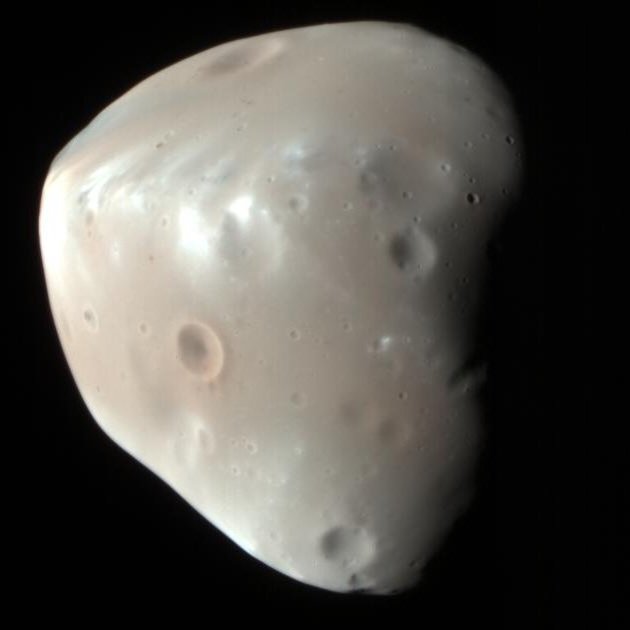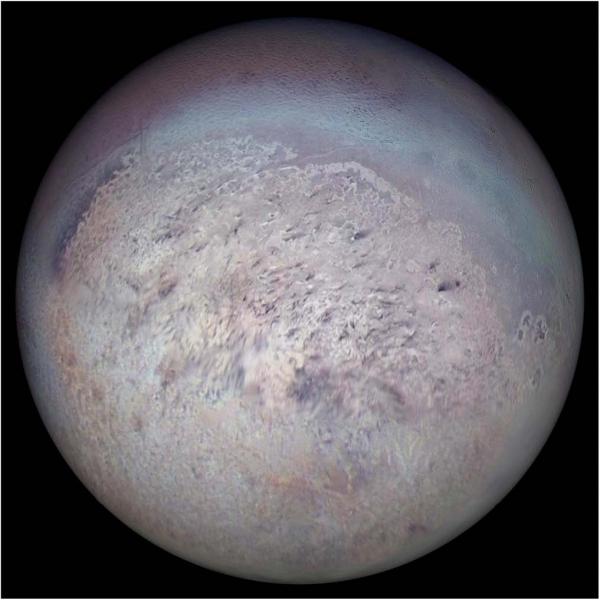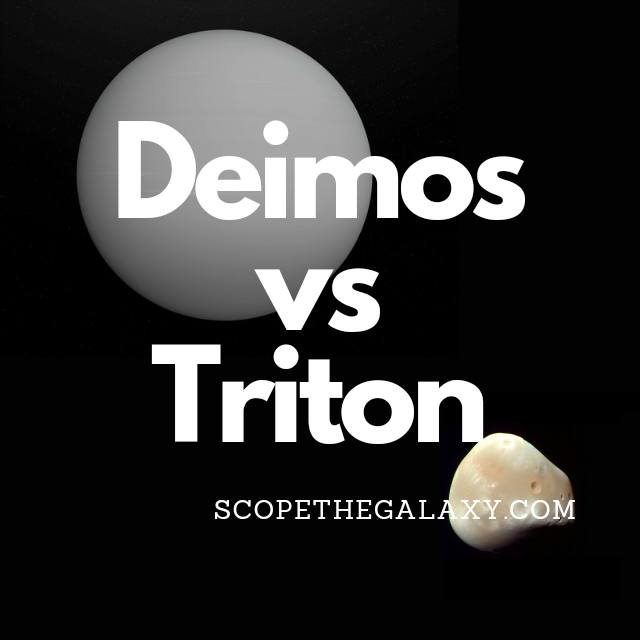*This post may contain affiliate links. This means we may make a commission if you purchase an item using one of our links*
The main differences between Deimos and Triton are that Deimos is much smaller with a diameter of 12.4km compared to Triton’s 2,706km, Triton is spherical in shape while Deimos is not and Triton is one of many planets that orbit Neptune while Deimos is one of 2 that orbits Mars.
There are various other differences between these two celestial objects so, continue reading for a more thorough look at both of them along with a breakdown of their similarities and differences.
What Is The Moon Deimos?
Table of Contents

Deimos is the smaller and outermost of the two moons of Mars, named after the Greek God of dread and terror (the brother of Phobos). This satellite was also discovered by American astronomer Asaph Hall just five days before Phobos (12th August 1877).
Scientists like Johannes Kepler had put forward theories for the existence of these moons many years before they were discovered. Their calculations were based on the fact that the planets on either side (Earth and Jupiter) possessed one and four moons, respectively.
Still, none were discovered until the 19th century. One of the main reasons for this is that the tiny size of Phobos and Deimos, combined with an exceptionally close orbit to their planet, means that the glare of Mars often obscures our view of them.
Phobos measures just 15 x 12 x 11 km and completes an orbit of Mars once every 30 hours.
This tiny moon is also a heavily cratered landscape shaped by the impact of asteroid collisions over time. However, the material thrown up from these impacts doesn’t appear to have landed back on the moon’s surface as it usually would. This could be because the lack of gravity on Phobos allowed the ejected material into space.
The surface gravity on Deimos is just 0.003 m/s^2 (compared to 9.807 m/s^2 on Earth), which means the average gravitational pull of Deimos is only 0.003 m/s. With only 1/2500th of Earth’s gravity, you would need a tether to walk on this rocky moon, or every step would put you at risk of achieving escape velocity and launching yourself into space.
The composition of Deimos is similar to Phobos, suggesting that it might also be a captured asteroid. Its surface is very dark gray and has an albedo of around 0.07, meaning it reflects just 7% light (about half of the light Earth’s moon can reflect).
What Is The Moon Triton?

Triton is the largest moon of Neptune, whose most unusual feature is its retrograde orbit. Triton is the only major moon in our solar system which orbits in the opposite direction of its planet’s rotation.
First discovered on 10th October 1846 (just 17 days after the discovery of its planet, Neptune) by British astronomer William Lassell, “Triton” comes from a merman in Greek myth; a name which perhaps stems from the composition of this faraway moon.
The diameter of Triton is approximately 2,706km, making it a similar size to Earth’s moon. However, we know that its mass is far less than the first estimates suggested because data from Voyager showed that the surface is icy and highly reflective, a less dense composition than the dark surface of our moon.
This icy surface has resulted in ice based natural satellite displaying temperatures in the region of – 235 degrees Celsius.
This lower density stems predominantly from the water-ice interior encasing a denser rock core. Still, the mean density of 2.06 grams per cubic cm remains higher than that of any of Saturn’s or Uranus’ moons. In addition, Triton holds more than 99.5% of the mass of everything that orbits the planet Neptune and its total mass is greater than every smaller satellite in the solar system combined.
Scientists think that Triton may be an object from the Kuiper Belt that Neptune’s gravity captured millions of years ago. This is because it shares many similarities with the dwarf planet Pluto – the best-known world within the Kuiper Belt.
This frozen world is a land of geological oddities with craters and a collection of depressions and ridges known as cantaloupe terrain. The geysers found on this moon shoot plumes of nitrogen as high as 8km high, which creates a thin atmosphere of nitrogen.
In around 3.5 billion years, Triton’s orbit will travel too close to Neptune, and the planet’s gravitational pull will break the moon apart, creating a ring system.
Similarities Between Deimos And Triton
As both are natural satellites, Deimos and Triton do share a few similarities, which includes the following:
- Both have a rocky, terrestrial surface.
- Neither have rings surrounding them.
- Both are tidally locked to their planet.
- Both orbit their planet in an elliptical pattern.
- Neither have tectonic plates.
- Neither have a magnetic field.
- Triton and Deimos have a practically non-existent axial tilt.
Differences Between Deimos And Triton
As for the differences between the two, they include the below.
- Deimos orbits Mars whilst the Triton orbits Neptune
- Triton is a spherical shape while Deimos is not.
- Triton has a diameter of 2,706km whilst Deimos has a diameter of 12.4km.
- Deimos has no atmosphere whilst Triton is composed mostly of nitrogen with small amounts of methane.
- A day on Deimos takes 30 hours whilst a Triton day takes 5.877 days.
- It takes Deimos 30 hours to orbit Mars and around the Sun in 687 days whilst Triton orbits Neptune in 5.877 days whilst it orbits the Sun in 165 years.
- Deimos’ temperature ranged between -4 to -112 degrees Celsius whilst Triton’s is between -235 degrees Celsius.
- Triton’s density is 2.06 g/cm³ whilst Deimos density is 1.47 g/cm³.
- Triton mass is 2.14 × 10^22 kg whilst Deimos’ mass is 1.4762 × 10^15 kg.
- Deimos’ gravitational strength is 0.003 m/s² whilst Triton’s is 0.779 m/s².
- Triton orbits Neptune at an average distance of 354,800km whilst Deimos is 24,680km away from Mars.
- Triton has a central core while Deimos does not.
- Triton has volcanic activity while Deimos does not
Summary
Both Deimos and Triton are natural satellites, are tidally locked to their respective planets and are rock based however, they are still unique when you breakdown their features
Whether it be in regards to their mass, size, physical shape, gravitational strength, how they orbit their respective planets and more, Triton and Deimos are still very distinct celestial bodies in their own right.

